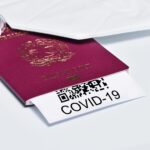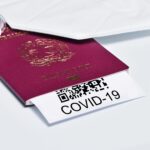Prospective international students aiming to study in Canada must now navigate a significantly altered financial landscape. Immigration, Refugees and Citizenship Canada (IRCC) has implemented a substantial increase to the cost-of-living financial requirement for study permit applicants. This pivotal change, effective since January 1, 2024, has profound implications for anyone planning their educational journey in Canada. This article provides a comprehensive and authoritative overview of the new proof of funds threshold, the rationale behind this monumental shift, what constitutes acceptable financial proof, and the broader context of these adjustments within Canada’s international student program.
Table of Contents
- 1. Understanding the Monumental Shift in Canada’s Study Permit Financial Requirements
- 2. A Detailed Breakdown of the New Proof of Funds Calculation
- 3. What Qualifies as Acceptable Proof of Financial Support?
- 4. The Far-Reaching Implications for Prospective International Students
- 5. Frequently Asked Questions (FAQ)
Understanding the Monumental Shift in Canada’s Study Permit Financial Requirements
The decision by IRCC to more than double the cost-of-living requirement was not made in a vacuum. For nearly two decades, the minimum proof of funds for a single study permit applicant stood at C$10,000, a figure established in the early 2000s. It became increasingly clear that this amount no longer reflected the economic realities of living in Canada. With rising inflation, housing shortages, and increased daily expenses, many international students arrived underfunded, making them vulnerable to financial instability and, in some unfortunate cases, exploitation. This policy adjustment is a direct response to this critical issue, designed to ensure that students are better prepared financially for their life in Canada. The new threshold is now tied directly to 75% of the Low Income Cut-Off (LICO), a statistical measure used by Statistics Canada to identify the income level at which a family is likely to spend a significantly larger portion of its income on necessities like food, shelter, and clothing than the average family. By linking the requirement to LICO, IRCC has created a dynamic benchmark that will be updated annually, ensuring the financial requirement remains relevant and reflective of the current cost of living. This measure is intended to provide a more accurate and realistic financial picture for incoming students, setting them up for success rather than struggle.
A Detailed Breakdown of the New Proof of Funds Calculation
The most significant change for prospective students is the new base amount for the cost-of-living requirement. As of January 1, 2024, a single applicant must demonstrate access to C$20,635. It is imperative to understand that this amount is in addition to the funds required for their first year of tuition fees and travel expenses to Canada. Therefore, the total proof of funds will be the sum of tuition, travel costs, and this new cost-of-living figure. The requirement also increases with the number of family members accompanying the student. While IRCC provides a detailed table, the principle is that each additional family member will necessitate a higher total amount of settlement funds. For instance, the cost-of-living amount for a student and one family member is C$25,690, and for a student with two family members, it is C$31,583. It is crucial for applicants to consult the official IRCC guidelines for the precise amount corresponding to their family size. An important exception to this federal rule is the province of Quebec. Quebec establishes its own minimum financial requirements for international students, which are typically lower than the federal LICO-based figure. Applicants destined for an institution in Quebec must meet the provincial requirements, which are also subject to annual adjustments. This distinction is vital for those planning to study in Quebec and requires careful attention to the specific provincial regulations.
Key Takeaways on the New Financial Requirement
- New Base Amount: A single applicant must now show C$20,635 for living expenses.
- Additional Funds: This amount is separate from and in addition to the full tuition for the first year of study and estimated travel costs.
- Annual Adjustments: The C$20,635 figure is based on 75% of the 2023 LICO and will be updated annually by Statistics Canada, meaning applicants in future years must verify the current requirement.
- Family Members: The required amount increases for each dependent family member (spouse, common-law partner, dependent children) accompanying the student.
- Quebec Exception: Applicants with a Quebec Acceptance Certificate (CAQ) must meet Quebec’s distinct and separate financial requirements, not the federal amount.
What Qualifies as Acceptable Proof of Financial Support?
Demonstrating sufficient funds is one of the most critical components of a successful study permit application. IRCC requires clear, verifiable evidence that the funds are legitimate and readily accessible to the student. One of the most preferred and straightforward methods is a Guaranteed Investment Certificate (GIC) from a participating Canadian financial institution. A GIC is a secure investment that guarantees the principal amount and earns interest over a fixed period. For study permit purposes, a C$20,635 GIC provides immigration officers with undeniable proof that the funds are in Canada and will be disbursed to the student in regular installments upon arrival. This method is especially favored for applications under the Student Direct Stream (SDS). Beyond a GIC, other acceptable forms of proof include bank statements from the applicant’s or their parents’ account for the past four to six months, showing a consistent balance and history of funds. If using a sponsor’s funds (such as parents), a formal letter of financial support and evidence of their relationship to the applicant is essential. Other valid sources can be proof of a student or education loan from a bank, official letters detailing scholarships or funding from an educational institution, or proof of tuition and housing payments already made. The key for all documentation is clarity and legitimacy. The immigration officer must be convinced that the funds are not just temporarily borrowed for the application but are genuinely available to support the student’s expenses throughout their stay.
The Far-Reaching Implications for Prospective International Students
This significant increase in the Canada study permit proof of funds requirement is part of a broader federal strategy to enhance the integrity and sustainability of the International Student Program. The change was announced alongside other major policy shifts, including a temporary two-year cap on new study permit applications and modifications to the Post-Graduation Work Permit (PGWP) eligibility criteria. Together, these measures signal a move towards more controlled and managed growth in the number of international students entering Canada. For prospective students, the immediate implication is the need for more robust and long-term financial planning. The higher threshold presents a substantial barrier, particularly for students from countries with less favorable exchange rates against the Canadian dollar. It requires families to save more and for a longer duration. This change also indirectly favors students who can secure significant scholarships or are from more affluent backgrounds. While the policy’s intent is to protect students, its practical effect is a heightened financial entry barrier. Aspiring students must now be more diligent than ever in preparing their financial documentation, exploring all funding options like scholarships and educational loans, and ensuring their chosen Designated Learning Institution (DLI) is reputable and offers adequate support. This new reality underscores the importance of starting the application process early and seeking professional guidance to navigate the heightened complexities of the Canadian study permit system.
Frequently Asked Questions (FAQ)
What is the new cost-of-living requirement for a Canadian study permit?
As of January 1, 2024, a single study permit applicant must prove they have access to C$20,635 to cover their living expenses for one year. This amount is in addition to funds required for the first year of tuition and travel costs.
Why did IRCC increase the proof of funds amount?
IRCC increased the amount to better reflect the true cost of living in Canada, which has risen significantly since the previous C$10,000 requirement was set in the early 2000s. The goal is to ensure students are financially prepared and less vulnerable to financial hardship upon arrival.
What is a Guaranteed Investment Certificate (GIC)?
A GIC is a secure investment purchased from a Canadian bank that guarantees the principal amount. For study permit applications, buying a GIC for the required cost-of-living amount is a highly recommended method as it provides clear proof to IRCC that the funds are available in Canada for the student.
How is the proof of funds for Quebec different?
The province of Quebec sets its own minimum financial requirements for international students, which are separate from the federal requirements. Applicants with a Quebec Acceptance Certificate (CAQ) must meet the financial thresholds stipulated by the Quebec government, which are typically lower than the federal amount.
What documents can be used as Canada study permit proof of funds?
Acceptable documents include a Guaranteed Investment Certificate (GIC), bank statements for the past 4-6 months, proof of a Canadian bank account, letters confirming student loans, and official letters detailing scholarships or other funding. If using a sponsor’s funds, a letter of support is also required.
Talk to us to find out more. ->
The content above is not intended to provide legal advice or opinions of any kind and may not be used for professional or commercial purposes.







